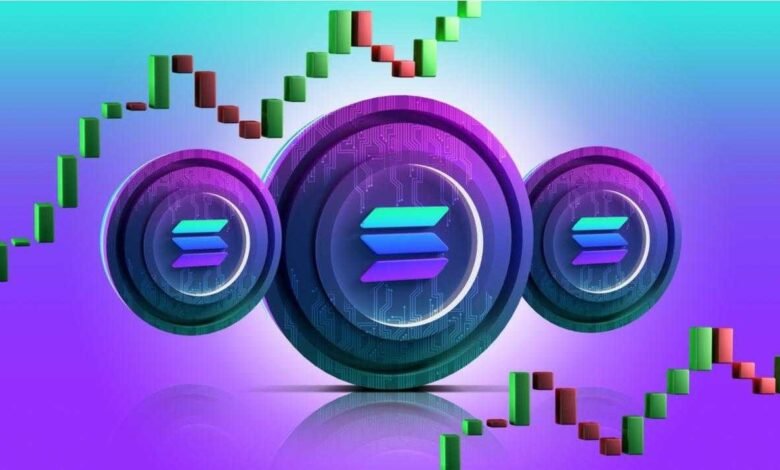Solana USDT and the Rise of Decentralized Exchanges (DEXs)

Introduction
The world of cryptocurrency is moving rapidly toward decentralization. The days of centralized exchanges holding complete control over users’ funds are slowly fading. Instead, Decentralized Exchanges (DEXs)—platforms that allow peer-to-peer trading without intermediaries—are becoming the backbone of the blockchain economy.
At the heart of this transformation lies Solana USDT, a stablecoin built on the Solana network that combines the stability of the U.S. dollar with the blazing speed of one of the fastest blockchains ever developed. As the demand for secure, transparent, and cost-efficient trading grows, Solana and its ecosystem of DEXs are redefining how traders interact with digital assets.
In this article, we’ll explore how Solana USDT fuels the rise of decentralized trading, how DEXs on Solana are revolutionizing finance, and why this innovation represents a major shift in the global crypto landscape.
1. The Shift Toward Decentralized Finance
For years, centralized exchanges (CEXs) like Binance, Coinbase, and Kraken dominated crypto trading. They offered liquidity, user-friendly interfaces, and compliance features. However, they also introduced risks—custodial control, withdrawal limits, and susceptibility to hacks.
The 2022 collapse of several centralized entities reignited the push for decentralization. Traders began seeking safer alternatives where they could retain full control of their funds. DEXs emerged as the natural solution, leveraging blockchain technology to eliminate middlemen.
Platforms such as Uniswap (Ethereum) and PancakeSwap (BNB Chain) paved the way—but Solana has since taken decentralized trading to the next level, offering speed and affordability unmatched by its competitors.
2. Why Solana Is Perfect for DEXs
Solana’s blockchain design offers several core advantages for decentralized exchanges:
- Unmatched Speed: With the ability to handle over 65,000 transactions per second (TPS), Solana ensures that trades execute almost instantly.
- Low Transaction Costs: Average fees are less than $0.001, making it ideal for high-frequency and micro trades.
- Scalability: Solana’s Proof of History (PoH) combined with Proof of Stake (PoS) guarantees smooth performance even during peak activity.
- High Liquidity Potential: Fast confirmations encourage more trading activity, deepening liquidity pools.
Together, these factors make Solana an ideal platform for DEXs to thrive—and Solana USDT plays a crucial role in this system by providing a stable and efficient base asset for trading pairs.
3. The Role of Solana USDT in DEX Ecosystems
Stablecoins are the lifeblood of decentralized exchanges. They provide consistent value, simplify pricing, and serve as safe havens during volatile markets.
Solana USDT—the USDT stablecoin issued on Solana’s network—enhances these benefits by adding speed and near-zero fees. It acts as:
- A Base Trading Pair: Most Solana-based DEXs list trading pairs against USDT, making it the primary asset for swaps.
- A Liquidity Medium: Liquidity providers (LPs) use Solana USDT to stabilize pools and reduce impermanent loss.
- A Settlement Layer: Traders can quickly move profits, pay fees, or rebalance positions without leaving the network.
Its stability and seamless integration into Solana’s DeFi infrastructure make it one of the most traded and reliable assets in the ecosystem.
4. The Advantages of Solana-Based DEXs
Compared to DEXs on Ethereum or BNB Chain, Solana’s decentralized exchanges stand out in multiple ways:
- Ultra-Low Fees: Trading on Solana typically costs less than a fraction of a cent, compared to several dollars on Ethereum.
- Instant Transactions: Orders execute in milliseconds, making it suitable for real-time strategies.
- User Accessibility: Mobile and browser-based wallets like Phantom and Solflare integrate directly with Solana DEXs.
- Composability: Solana’s ecosystem allows protocols to interact fluidly—one dApp’s liquidity can power another.
- Advanced Trading Tools: Many Solana DEXs feature on-chain order books, enabling more precise trading compared to automated market makers (AMMs).
These advantages make Solana USDT a key part of a new, faster financial system built on open infrastructure.
5. Top Solana DEXs Powering the Revolution
a. Raydium
Raydium is the flagship decentralized exchange on Solana. It combines automated market maker (AMM) pools with a central limit order book via the Serum protocol.
- Supports hundreds of Solana USDT trading pairs.
- Offers yield farming and staking opportunities.
- Enables on-chain liquidity aggregation.
b. Orca
Orca provides a simple, intuitive interface for users new to DeFi. Its “Whirlpools” allow concentrated liquidity similar to Uniswap V3, maximizing efficiency.
- Low slippage and gas fees.
- User-friendly design ideal for mobile trading.
c. Jupiter Aggregator
Rather than being a single DEX, Jupiter acts as an aggregator that scans multiple Solana-based exchanges to find the best swap rates for users. It’s considered the backbone of Solana DeFi routing.
d. Serum (Project Phoenix)
Originally one of the earliest Solana DEXs, Serum introduced the concept of on-chain order books. Although it underwent restructuring in 2023, its influence paved the way for modern Solana-based trading platforms.
e. Lifinity
Lifinity uses an innovative approach to maintain deep liquidity pools and minimize price impact. It offers institutional-grade infrastructure for algorithmic traders.
6. How Solana’s Architecture Enhances DEX Efficiency
Unlike Ethereum’s model, where every transaction competes for gas space, Solana uses a unique design that separates transaction validation from execution.
This allows DEXs on Solana to:
- Handle thousands of simultaneous trades.
- Avoid congestion during high-volume events.
- Support high-frequency trading strategies.
For example, during peak hours on Ethereum, users may pay $20 to execute a swap. On Solana, the same trade costs less than a cent—making decentralized trading practical for everyone.
7. The Rise of Liquidity Pools
Liquidity pools are the foundation of decentralized exchanges. They replace traditional order books by allowing users to contribute assets into shared pools, enabling others to trade against them.
When users deposit tokens like Solana USDT and SOL into a pool, they become liquidity providers (LPs) and earn a share of trading fees or governance rewards.
Key Solana liquidity pools include:
- Raydium’s USDT/SOL and USDT/USDC pools.
- Orca’s concentrated liquidity pairs.
- Lifinity’s institutional pools for algorithmic trading.
Liquidity mining incentives continue to attract users, creating a sustainable and self-reinforcing cycle of growth.
8. Cross-Chain Integration and Wormhole
The Wormhole Bridge is one of Solana’s most significant innovations. It connects Solana with other major blockchains like Ethereum, Polygon, and Avalanche, allowing seamless transfer of assets.
For DEX users, this means they can easily move Solana USDT between ecosystems to chase better yields or participate in multi-chain trading strategies.
Wormhole has helped establish Solana as a true hub for liquidity, bridging isolated markets and enhancing interoperability across DeFi networks.
9. Real-World Use Cases of Solana DEXs
The impact of Solana-based decentralized exchanges extends beyond speculative trading:
- Global Payments: Merchants can accept Solana USDT for instant, low-cost payments.
- Gaming & NFTs: DEXs power in-game economies where tokens are swapped in real time.
- Decentralized Derivatives: Protocols like Drift and Mango Markets allow users to trade perpetual futures directly from their wallets.
- Cross-Border Remittances: USDT-based DEXs offer faster and cheaper remittance options compared to banks.
These applications highlight how decentralized exchanges are expanding from crypto trading to broader financial infrastructure.
Conclusion
The rise of decentralized exchanges marks a fundamental transformation in how people trade and manage digital assets. Solana’s combination of speed, scalability, and affordability has set a new benchmark for blockchain performance, enabling DEXs to function at scale for the first time.
With Solana USDT serving as the stable foundation for liquidity and transactions, users now have access to instant, low-cost, and permissionless trading experiences that rival traditional finance.
As adoption spreads, the integration of Solana DEXs into global payment systems, gaming economies, and institutional markets will redefine the future of finance — open, efficient, and accessible to everyone.






